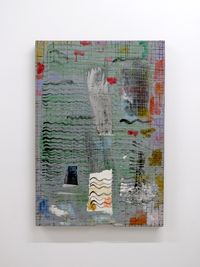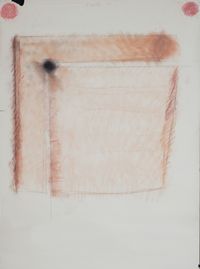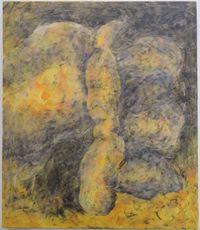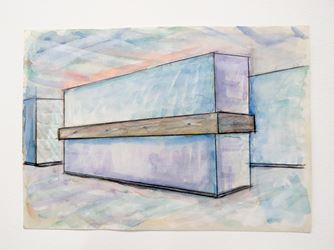


Yumiko Chiba Associates viewing room shinjuku is delighted to present Colors, a two-person exhibition by Katsuro Yoshida and Katsuhiko Narita. Katsuro Yoshida, Katsuhiko Narita / Colors is a new, in-depth exploration of the work of Katsuro Yoshida (1943–1999) and Katsuhiko Narita (1944–1992), based on the theme of colour, and focusing primarily on drawings. Katsuro Yoshida and Katsuhiko Narita studied oil painting at Tama Art University's Faculty of Art and Design at around the same time, both also turning out prodigious volumes of work from soon after graduation (in 1968 for Yoshida, 1969 for Narita).
Narita submitted the carbonised wood work SUMI to the 6th Paris Youth Biennale at the Musée D'Art Moderne de la Ville de Paris in 1969, and to the 10th Tokyo Biennale: Between Man and the Matter at the Tokyo Metropolitan Art Museum the following year. Yoshida meanwhile took industrial products such as timber, glass and light bulbs and installed them with minimal modification at the 1969 Trends in Contemporary Japanese Art exhibition and at August 1970: Aspects of New Japanese Art, both of which Narita also took part in. The activities for a handful of years around 1970 of a particular group of Japanese artists, including these two, later became referred to as the Mono-ha, now well established internationally as a major trend in postwar Japanese art.
In the early years of his career, through his 'Cut-off' series (1968–1970) Yoshida engaged in the externalization of human consciousness, via motifs such as human figures and furniture. In 1970, he began making photography-based prints, in the late 1970s presenting paintings employing a transfer construction. From the late 1980s onward he concentrated on pictures made by applying graphite with his fingers.
Prior to SUMI, during the latter half of the 1960s Narita was experimenting with reconfiguring spaces by substituting different materials for components such as walls and floors. After a gap of a few years he began presenting work again, making his presence felt on the art scene via a series of abstract reliefs in organic style. For the next fifteen years or so Narita produced animistic objects from materials such as fabric, logs, and rabbit fur; and objects and paintings inspired by the depictive style and mountings of classical Japanese art.
Here we have positioned the works of Yoshida and Narita around the Mono-ha. For both, their activities during this period, now positioned within the Mono-ha movement, were definitive experiences for artists starting out in their early twenties, and the chronology here is well established. Yet the sheer wealth of Yoshida and Narita's respective output before and after this, particularly after, cannot be understood solely in terms of this departure point.
Sadly passing away one after another in the 1990s, these two artists left many works in their studios. Basic surveys of those legacies are in progress, and the conditions allowing us to engage fully with their works are at last beginning to fall into place. As a start, it is hoped this exhibition will give viewers a firm grasp of the colours employed by Katsuro Yoshida and Katsuhiko Narita in the works they produced with such consistent dedication throughout their lives.
Press release courtesy Yumiko Chiba Associates.
ROPPONGI HILLS Hollywood Beauty Plaza 3rd Floor
6-4-1 Roppongi
Minato-ku
Tokyo, 106-0032
Japan
www.ycassociates.co.jp
+81 362 766 731
+81 362 766 738 (Fax)
Tues - Sat, 12pm - 6pm
Closed Sun - Mon and national holidays
